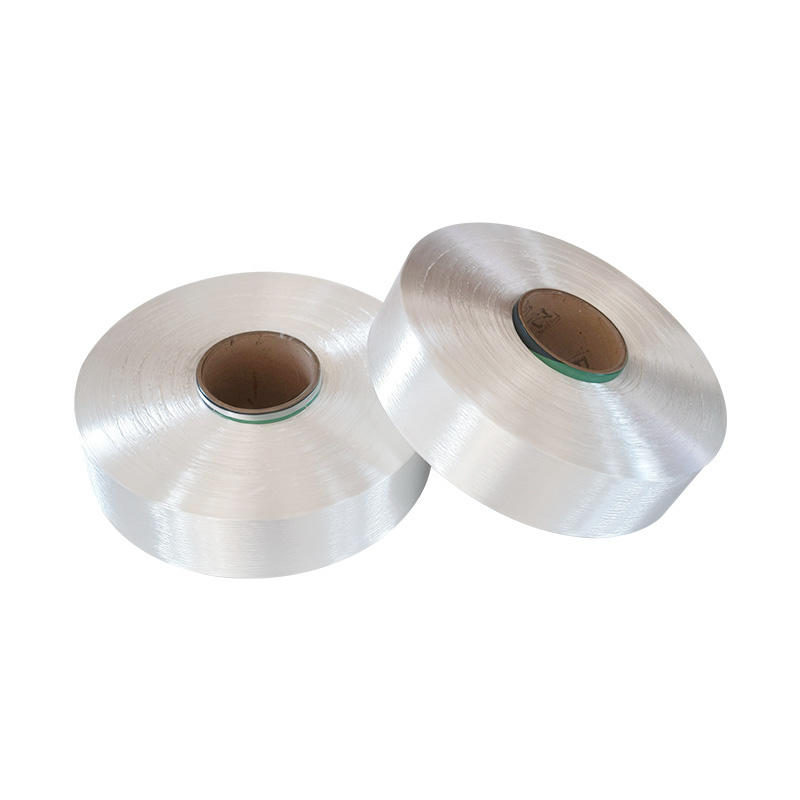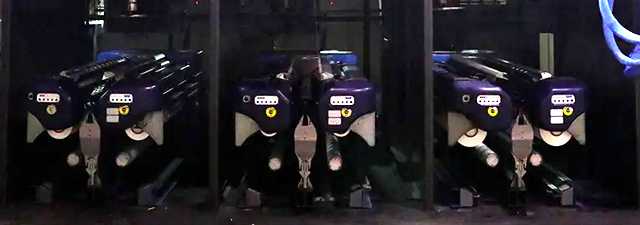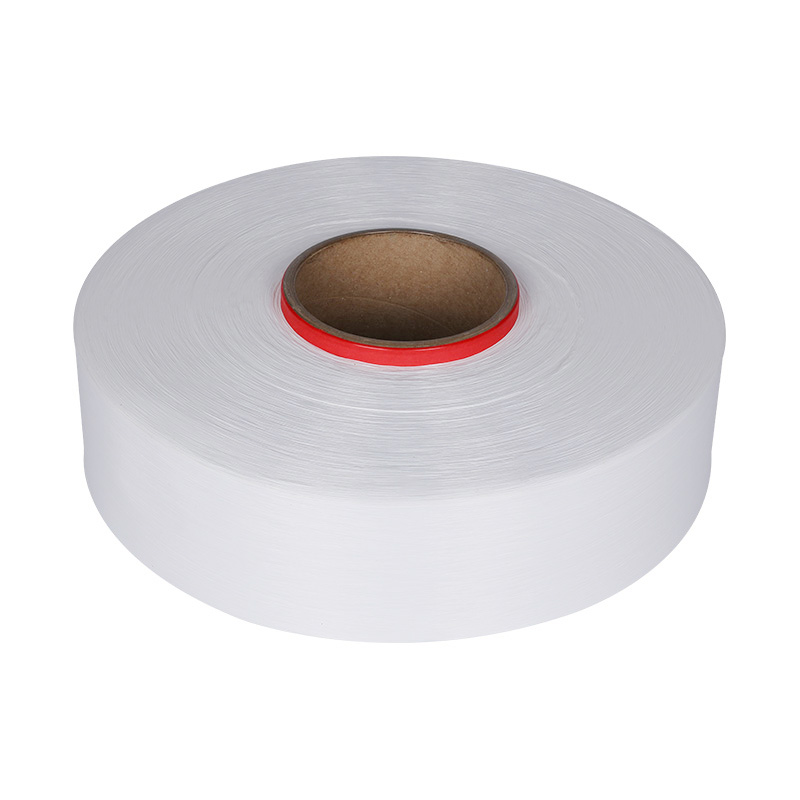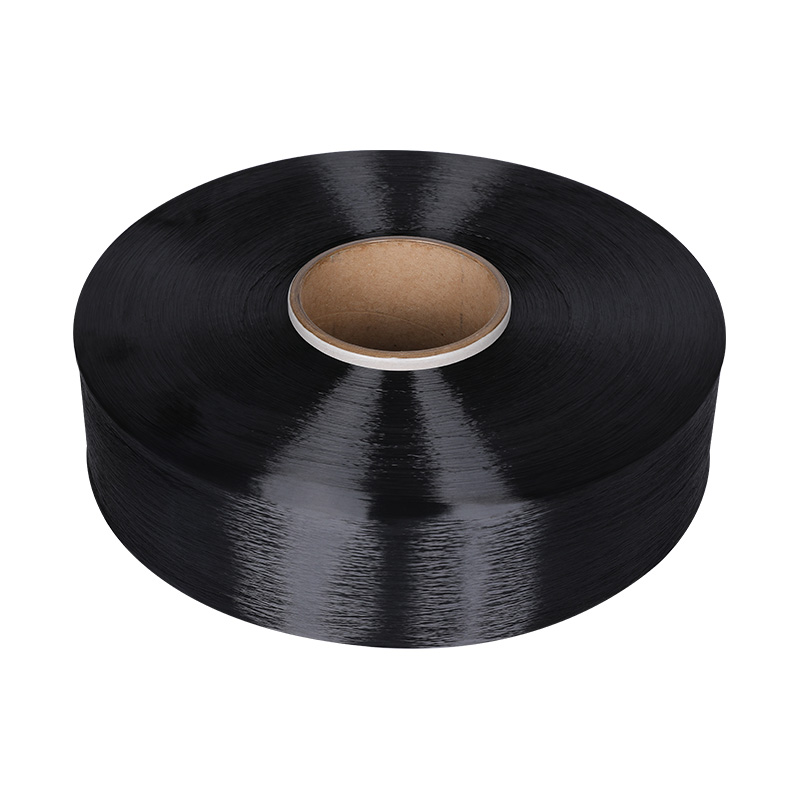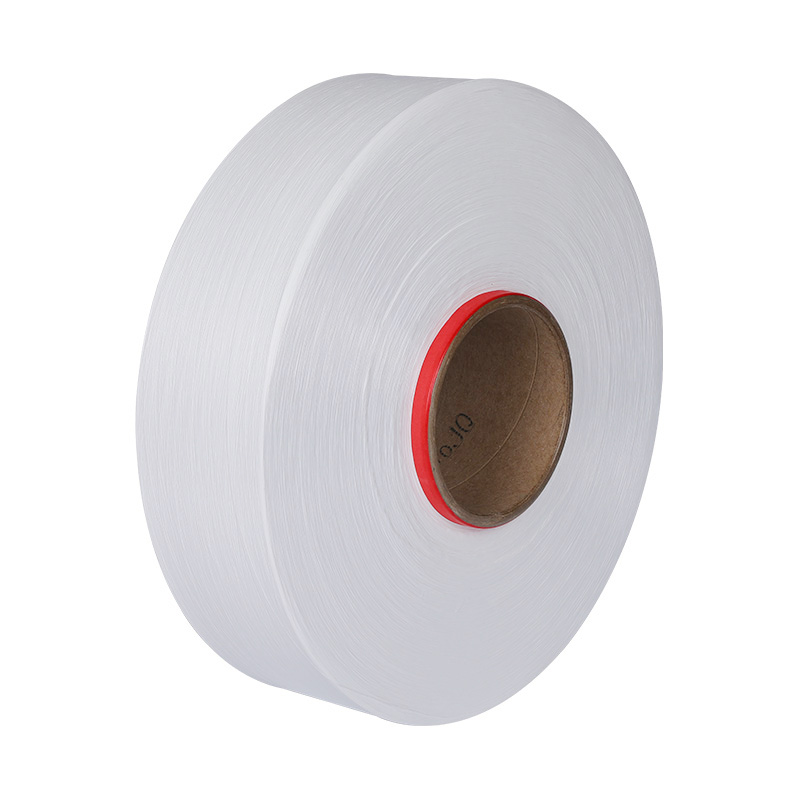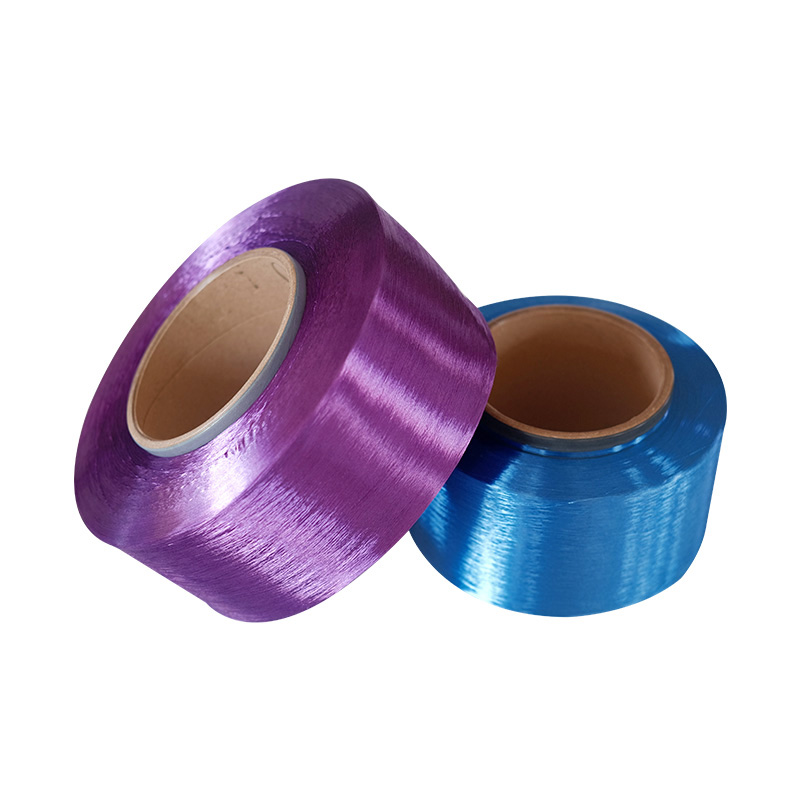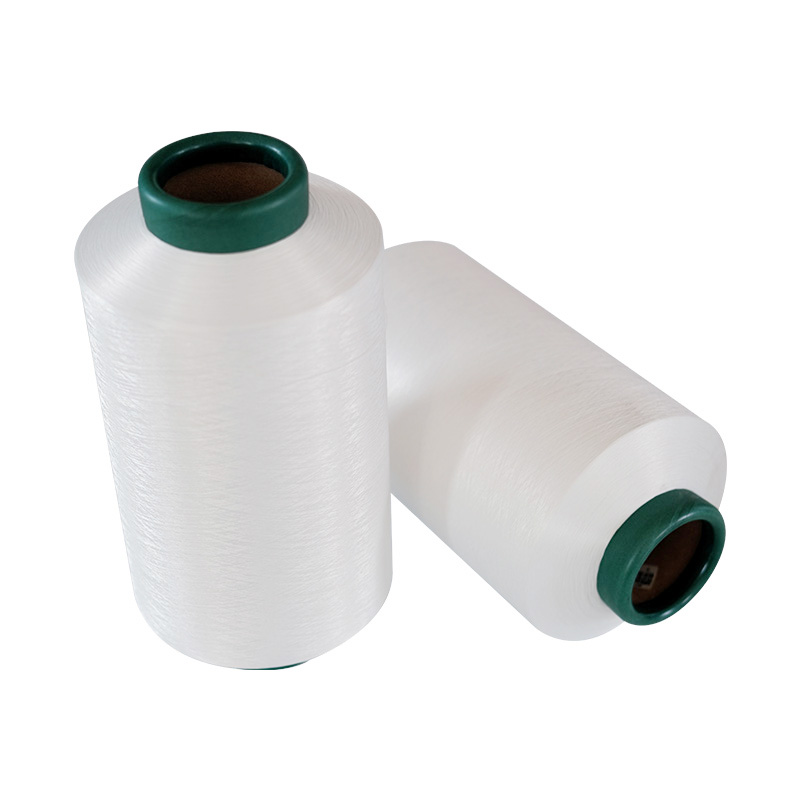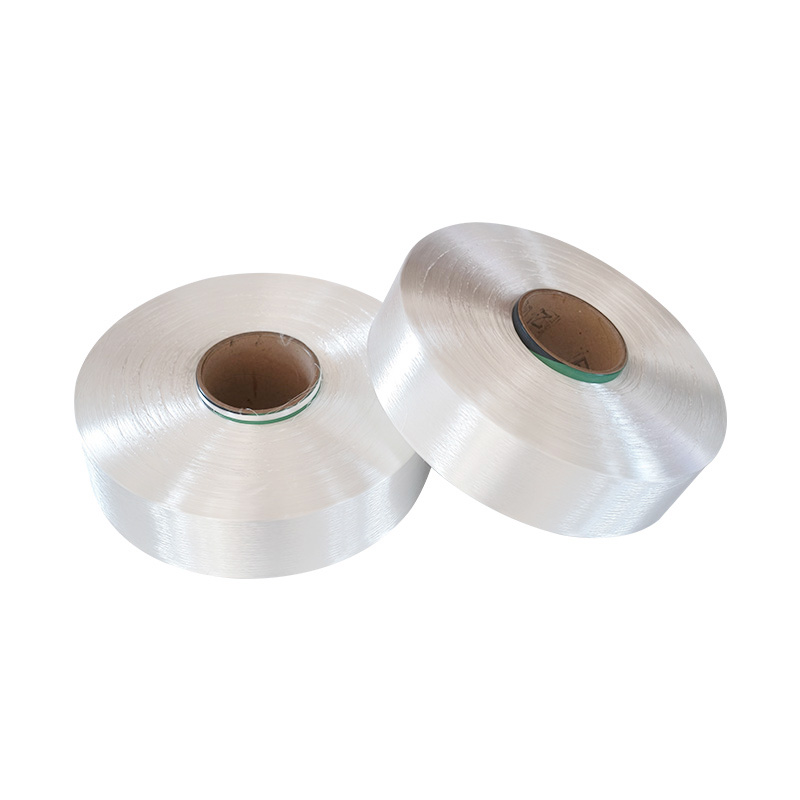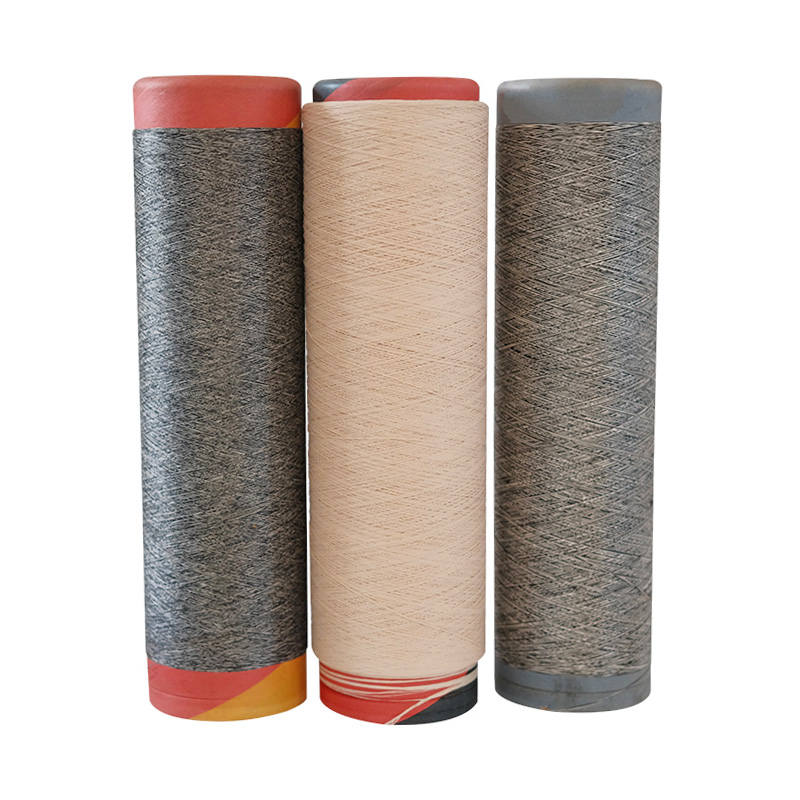Introduction to Recycled Yarns
The textile industry stands at the crossroads of sustainability and tradition. For decades, fashion and textile manufacturing have heavily relied on virgin cotton, petroleum-based polyester, and chemical-intensive dyeing processes. This linear model of take–make–dispose has contributed to global waste, water pollution, and excessive carbon emissions.
In this context, the Recycled yarn series emerges as a transformative solution. Unlike traditional yarns spun from virgin fibers, recycled yarns are produced by reclaiming waste materials such as discarded garments, fabric scraps, and post-consumer plastics like PET bottles. Through advanced processes, these materials are broken down, cleaned, and respun into new yarns, ready for a second life in fashion, home textiles, and industrial applications.
As global awareness of climate change intensifies, the rise of eco-friendly yarns is no longer a niche trend. Instead, it has become a key driver of the circular fashion industry, inspiring designers, manufacturers, and consumers to embrace sustainable textiles as part of a greener future.
What Are Recycled Yarns?
Recycled yarns are fibers produced from reclaimed materials rather than newly harvested resources. These yarns can be made from both pre-consumer waste, such as textile factory leftovers, and post-consumer waste, such as worn clothing, old household textiles, and even industrial waste like fishing nets.
The process typically involves:
- Sorting and cleaning the waste.
- Shredding the material into fibers.
- Re-spinning the fibers into yarns.
- In some cases, blending with virgin fibers to enhance performance.
The resulting yarns offer unique textures, natural color variations, and robust qualities. In modern green manufacturing, these yarns stand out as prime examples of low carbon fabrics, reducing reliance on virgin cotton or petroleum-derived polyester.
A Brief History and Evolution of Recycled Yarns
Recycling textiles is not a new practice. For centuries, people repurposed old clothing into rags, quilts, or insulation. However, large-scale textile recycling began to take shape in the 20th century. Initially, the industry focused on wool and cotton recovery, but technological limitations restricted the scope.
The real breakthrough came in the late 20th and early 21st centuries, with innovations in synthetic recycling. The transformation of plastic bottles into polyester fibers—commonly known as rPET yarn—revolutionized the sector. Today, the Recycled yarn series includes cotton, denim, wool, silk, PET plastics, nylon from fishing nets, and even experimental fibers derived from agricultural waste such as pineapple leaves and coffee grounds.
This expansion reflects the growing momentum of sustainable textiles and positions recycled yarns as central to the circular fashion industry.
Why Choose the Recycled Yarn Series?
Environmental Benefits
- Waste reduction: diverts millions of tons of textiles and plastics from landfills and incineration.
- Resource conservation: recycled cotton requires up to 80% less water compared to virgin cotton.
- Carbon footprint reduction: rPET yarn production generates nearly 60% fewer emissions than virgin polyester.
Ethical Benefits
- Supports circular fashion industry: transforms waste into valuable raw materials.
- Encourages transparency: certified yarns (GRS, Oeko-Tex) ensure compliance with sustainable practices.
- Promotes conscious consumption: encourages consumers to choose eco-friendly yarns.
Economic Benefits
- Job creation: expands opportunities in textile recycling and green technology sectors.
- Competitive branding: sustainable products build consumer loyalty.
- Cost optimization: reduced reliance on virgin resources helps stabilize raw material costs in the long term.
Types of Recycled Yarns
Recycled Cotton Yarn
Made from factory offcuts or post-consumer cotton garments. Soft, breathable, and biodegradable, this yarn is ideal for T-shirts, towels, blankets, and eco-friendly crafts. Its natural shades often eliminate the need for re-dyeing, making it a hallmark of low carbon fabrics.
Recycled Denim Yarn
Derived from old jeans and denim waste. Known for its rustic charm, durability, and indigo tones, recycled denim yarn is perfect for bags, rugs, cushions, and sustainable apparel.
Recycled Plastic Yarn (rPET)
One of the most impactful innovations in eco-friendly yarns. Produced from post-consumer PET bottles, rPET yarn is durable, lightweight, and moisture-resistant. It is widely used in sportswear, outdoor gear, carpets, and upholstery fabrics.
Other Recycled Yarns
- Recycled wool: warm, insulating, and luxurious.
- Recycled silk: smooth, elegant, and sustainable.
- Recycled nylon: reclaimed from fishing nets or industrial waste, often used in swimwear or technical fabrics.
- Agricultural byproducts: pineapple leaves, banana fibers, coffee grounds—pioneering innovations for sustainable textiles.
Benefits of Using Recycled Yarns
Environmental Impact
- Conserves billions of liters of water.
- Reduces dependency on virgin cotton cultivation and oil extraction.
- Cuts landfill waste while lowering greenhouse gas emissions.
Ethical Considerations
- Reinforces the foundation of the circular fashion industry.
- Encourages green manufacturing standards across the supply chain.
- Enhances corporate social responsibility in textiles.
Economic Advantages
- Supports new markets for eco-friendly yarns.
- Reduces long-term environmental compliance costs.
- Strengthens consumer trust in sustainable branding.
Comparison Table: Environmental Footprint of Yarn Types
| Yarn Type | Water Usage (per kg) | Energy Consumption | Carbon Footprint | Durability |
|---|---|---|---|---|
| Virgin Cotton Yarn | ~20,000 liters | High | High | Moderate |
| Recycled Cotton Yarn | ~2,700 liters | Low | Low | Moderate |
| Virgin Polyester Yarn | Minimal | High | High | High |
| rPET Recycled Yarn | Minimal | Medium | Low | High |
How to Choose the Right Recycled Yarn
- Project purpose: Cotton for soft home goods, denim for rugged items, rPET for sportswear and bags.
- Texture and fiber content: Softness, elasticity, and breathability vary by yarn type.
- Color and dyeing: Pre-sorted recycled yarns save water by reducing the need for re-dyeing.
- Certifications: Look for GRS (Global Recycled Standard) and Oeko-Tex to ensure authenticity.
Tips for Working with Recycled Yarns
- Needle and hook sizes: Adjust for less elastic fibers like recycled cotton.
- Stitch patterns: Simple stitches highlight natural color variations in recycled yarns.
- Care instructions: Cold washing prevents shrinking and reduces microplastic release.
Creative Project Ideas with Recycled Yarn Series
- Knit or crochet a scarf from recycled cotton: breathable, soft, and eco-friendly.
- Design a denim quilt: rustic charm with unique color variations.
- Make a reusable shopping bag from rPET yarn: durable, waterproof, and a practical alternative to single-use plastics.
Comparison Table: Applications of Different Recycled Yarns
| Yarn Type | Best Use Cases | Key Advantages | Limitations |
|---|---|---|---|
| Recycled Cotton Yarn | Towels, blankets, casual wear | Soft, breathable, natural | Less elastic than virgin cotton |
| Recycled Denim Yarn | Bags, rugs, cushions, rustic apparel | Durable, unique color effect | Slightly rough texture |
| rPET Recycled Yarn | Sportswear, outdoor gear, upholstery | Lightweight, strong, moisture-resistant | Potential microplastic shedding |
| Recycled Wool Yarn | Sweaters, scarves, winter accessories | Warm, insulating, natural | May require blending for strength |
Future Trends in the Recycled Yarn Series
- Technological innovation: AI and robotics will improve waste sorting efficiency.
- New material exploration: Pineapple fibers, banana stems, algae-based textiles.
- Global cooperation: Governments and NGOs pushing legislation for circular fashion.
- Consumer education: Raising awareness about the benefits of eco-friendly yarns.
Conclusion
The Recycled yarn series is not just a new product category; it represents a paradigm shift in the textile industry. By reimagining waste as raw material, these yarns reduce environmental harm, conserve resources, and contribute to the development of sustainable textiles and the circular fashion industry.
The future of fashion is green, low-carbon, and circular. Every project made with eco-friendly yarns is a step toward a healthier planet. The transformation from discarded waste into beautiful fabrics is more than craftsmanship—it is a declaration of environmental responsibility.
The future belongs to Recycled yarn series.
 +86-0571-82795522
+86-0571-82795522 
 LANGUAGE
LANGUAGE 
 English
English